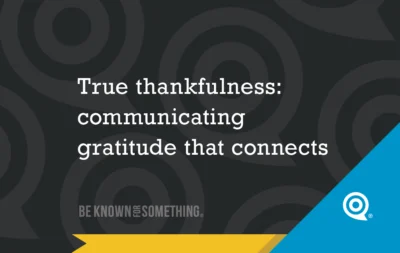Church Website Paradigm: The Right Side is the Wrong Side

A few years ago I traveled to the Turks and Caicos Islands. After flying, I was picked up by a limousine to take me to my client’s location. I was so glad I didn’t drive that first day. Because it’s a British territory, everyone drove on the left side of the street (most of the roads were 2-way traffic). When it came to traffic circles (roundabouts), I felt like we were rotating in the wrong direction and practically jumped out of my seat thinking we were going to be hit with cars entering the circle.
Everything seemed wrong.
Have you ever picked up a newspaper and needed instructions for using it? Probably not. We all know the “normal”; because the normal is consistent. It’s the paradigm.
My sister used to work for a bank. In her training she inquired about counterfeit bills. “Will I receive training so I’ll be able to identify one if it crossed my desk?” The bank manager informed her that “you’ll get to know the “feel” of genuine bills so that when a fake one crosses your fingertips, you’ll know that something’s wrong”.
Something will just feel wrong.
We’ve all become used to well-designed, professional websites as we search the internet. We sub-consciously know what “feels” right on a website and what we don’t like. This is called Web Paradigm. The norm of “most” websites.
Your Church’s website shouldn’t try to break out of web paradigm. If you attempt to, you risk frustrating the user. Therefore, always “fit” into the web paradigm or you’ll feel “wrong” to people who click on your site.
An interesting component of web paradigm is where most ads are placed. On the right side of the page. Of course most people don’t go to websites to “discover” ads. So web designers create ads disguised as photos that doesn’t look like ads. We’ve all been tricked into clicking on those areas so we’ve become scared of the right side of the page.
Most people avoid the right side of a website. The right side is now the wrong side.
The wrong side to place anything that’s incredibly important. Times, directions, schedules, events, or anything that can look like an ad (i.e. photos, clever graphics, etc.)
Please. Stop putting your important content on the right side of your website. Or be real clever in getting people to discover information there. Note: some web paradigms allow for certain information to be in the upper right corner. These exceptions? Things like search areas, login links, contact us, social media logos. Just make sure they’re in the header area (where ads normally don’t occur).
Want to know more about Website Paradigm? It’s something we talk about in our Website Analysis.
Want 25 Game-Changing Resolutions?
Related Posts

True thankfulness: communicating gratitude that connects
We’re just a couple weeks away from Thanksgiving. Though you might not know it by the jingling commercials already flooding

AI Prompts Every Church Communicator Should Be Using
Artificial Intelligence (AI) isn’t replacing church communicators, it’s simply helping the good ones work smarter. Tools like ChatGPT (and similar)

Church Growth Strategy: Clarity That Connects
Most churches pray for growth but overlook one of their most effective tools: a clear church growth strategy built on

